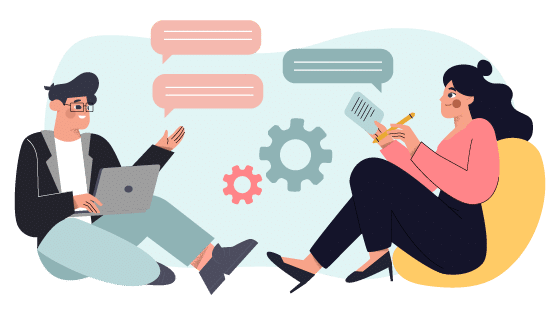Anyone who’s ever onboarded a new employee knows that it’s a careful push-and-pull between new employee and established employer. As a new recruit, the individual you’re onboarding wants to learn everything she can about her new job. As an employer, it’s your job to give your new employee the information she needs to get started and be effective right away.
Unfortunately, sometimes it can be a case of too much of a good thing. Dump too much information on a new recruit, and she could feel overloaded and stressed before sitting down at her new desk. Effective onboarding isn’t about throwing as much information at a new employee as possible, but personalizing the approach to her role and revealing the layers of the company little by little.
Layer #1: Company Culture
Before getting down to business, new recruits need to understand the company’s overall mission. Part of onboarding should be dedicated to show and tell: the company’s history, why the organization exists, and how the organization has grown over the years. After onboarding, a new employee should have a fairly solid idea of the workplace culture and what she can expect from colleagues, supervisors, and execs based on the company history.
Layer #2: Context
It’s a big world out there, and personalized onboarding helps new employees find their place. New employees should understand how the various departments work together, and how she’ll work within her department. Personalizing that walkthrough helps new employees gain perspective on how each role affects the organization–including their own.
Layer #3: Labeling Competencies
You wouldn’t expect each new recruit to have the same competencies, talents, and skills, but using the same onboarding procedure for everyone typically ignores the very personality traits and skills for which the new recruit was even hired. Making sure your LMS has the ability to label core competencies for each new recruit lets you see the menu of abilities you have available to you, while assigning the right training to each recruit as an individual.
Layer #4: Prescriptive eLearning
Once you’ve discovered and labeled an individual’s competencies and talents, it’s time to create a personal learning environment unique to that new employee. Based on what you’ve learned in the first 15, 30, 60, or even 90 days, you can create prescriptive learning paths that take an employee’s current knowledge base into consideration while suggesting topics and certifications that help to improve a new employee’s trajectory with your organization.
Personalization can improve new employee retention by highlighting the ways in which your organization thinks a little differently about onboarding. By treating each new recruit as an individual, you reveal your organization’s cultural strengths layer by layer to show off your strengths–and allow new employees to emphasize theirs.






